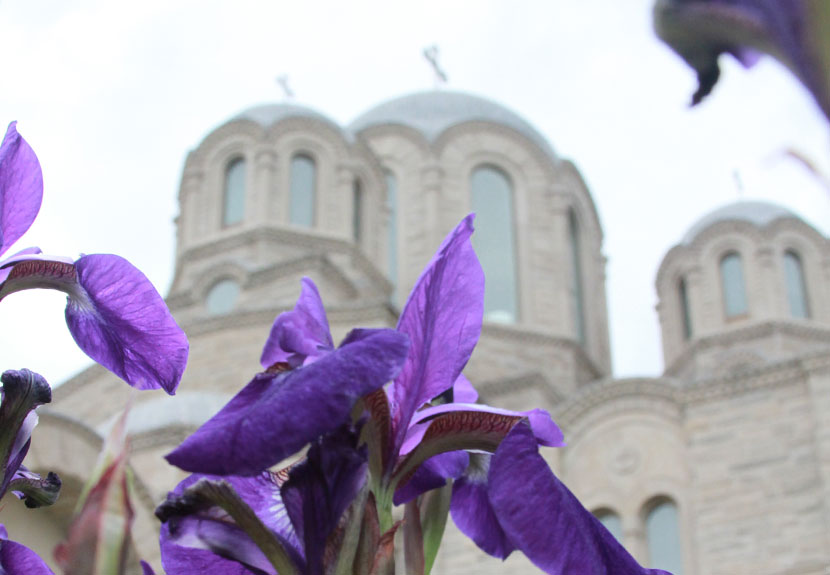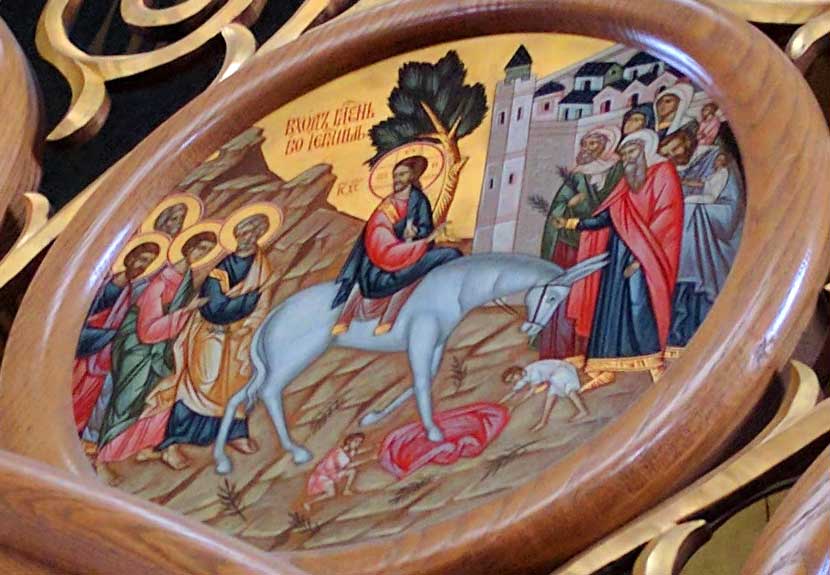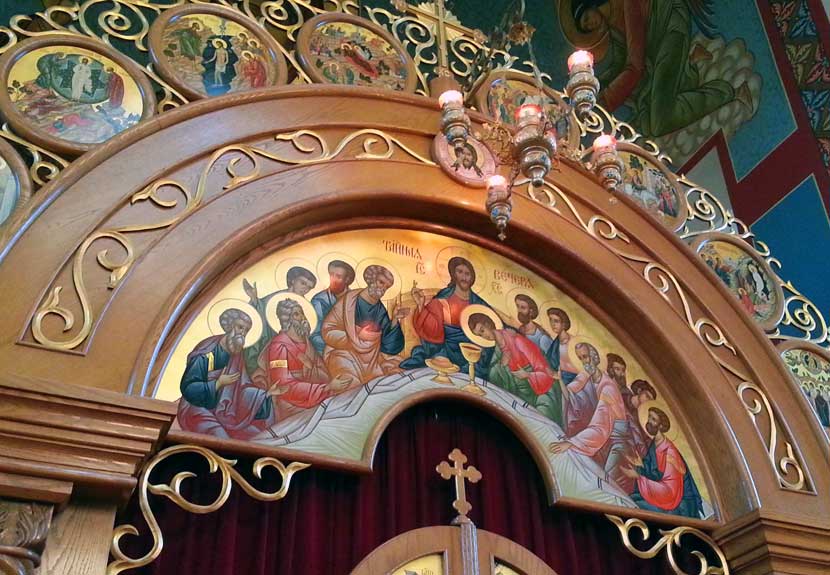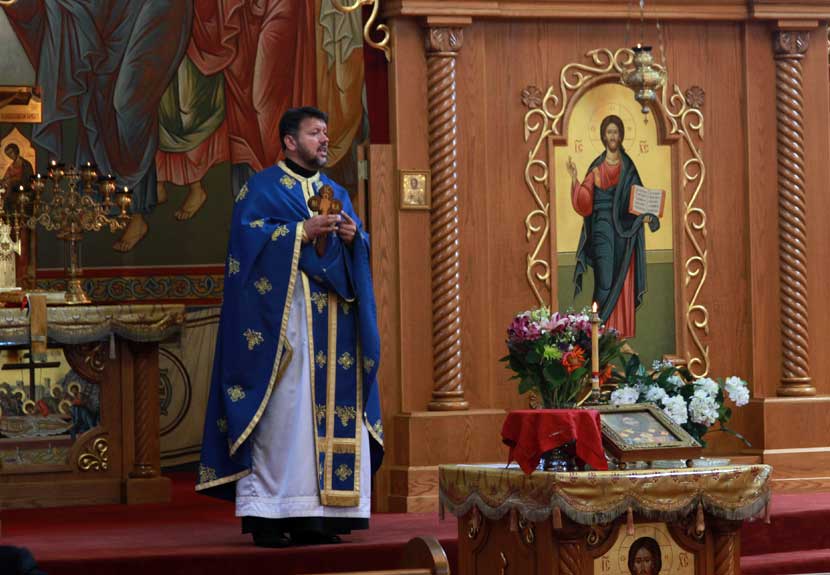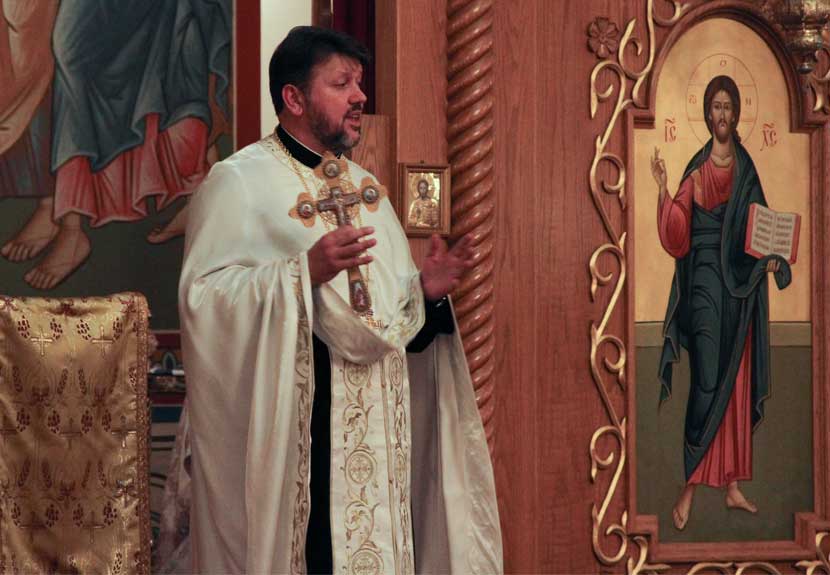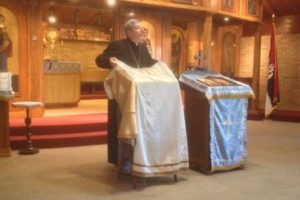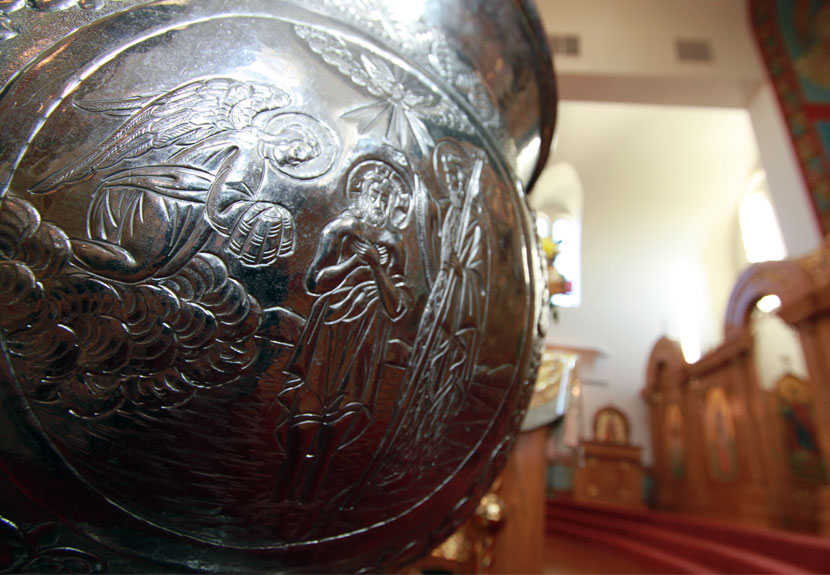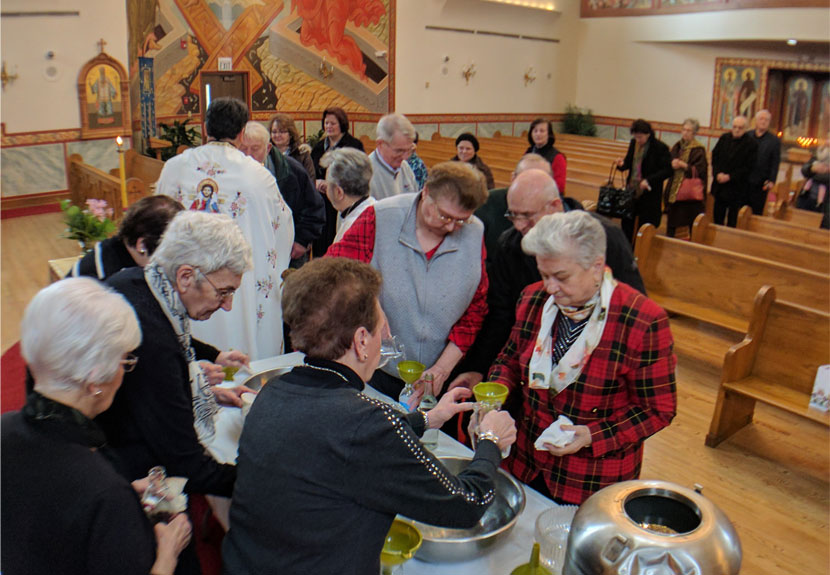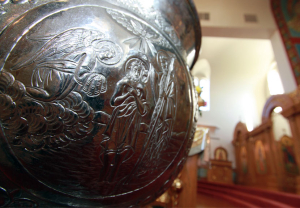It is the time of the year where members of St. Sava Serbian Orthodox Church in Merrillville, Indiana may have homes blessed by Father Marko. The 2017 Schedule for Blessing of Homes is now available for download in both Serbian and English languages.
Blessing of Homes – Schedule 2017
CHESTERTON, VALPARAISO
- From Thursday, January 21st to Thursday, January 28th
PORTAGE, OGDEN DUNES
- From Friday, January 29th to Tuesday, February 2nd
HOBART
- From Wednesday, February 3rd to Sunday, February 7th
HEBRON, KOUTS, LA CROSSE, DEMOTTE,
- From Monday, February 8th to Wednesday, February 10th
CROWN POINT
- From Thursday, February 11th to Thursday, February 18th
GARY, MERRILLVILLE
- From Friday, February 19th to Sunday, February 21st
SCHERERVILLE, DYER, ST. JOHN, CEDAR LAKE, LOWELL
- From Monday, February 22nd to Friday, February 26th
HAMMOND, MUNSTER, HIGHLAND, GRIFFITH
- From Saturday, February 27th to Wednesday, March 2nd
CHICAGO
- From Thursday, March 3rd to Sunday, March 13th
…………………………………………………………………………………
CHESTERTON, VALPARAISO
- Од четвртка, 21. јануара до четвртка, 28. јануара
PORTAGE, OGDEN DUNES
- Од петка, 29. јануара до уторка, 2. фебруара
HOBART
- Од среде, 3. фебруара до недеље, 7. фебруара
HEBRON, KOUTS, LA CROSSE, DEMOTTE
- Од понедељка, 8.фебруара до среде, 10. фебруара
CROWN POINT
- Од четвртка, 11. фебруара до четвртка, 18. фебруара
GARY, MERRILLVILLE
- Од петка, 19. фебруара до недеље, 21. фебруара
SCHERERVILLE, DYER, ST. JOHN, CEDAR LAKE, LOWELL
- Од понедељка, 22. фебруара до петка, 26. фебруара
HAMMOND, MUNSTER, HIGHLAND, GRIFFITH
- Од суботе, 27. фебруара до среде, 2. марта
CHICAGO
- Од четвртка, 3. марта до недеље, 13. марта
Blessing of homes
Blessing homes of Orthodox Christians is done each year after the feast of Theophany. This act is the central sign of God’s sanctification of all things through Christ’s baptism in the river Jordan and his epiphany to the world.
The family is considered, by the Orthodox faith, to be a small church. The family table is the home altar where the members gather each day to receive their daily bread from God with thanksgiving in the name of Christ.
The sanctification of the home takes place with prayer and the sprinkling of holy water. The priest, at this annual visit, asks God to have mercy on the house, to rid it of every evil and to fill it with every blessing.
Everyone of the house prays together for the living and the dead of the family, and all who live and have lived in the house. They all sing the hymn of salvation and process from room to room while the priest blesses the house.
When the priest comes, all who are present in the house should gather around the icon with the candle. They should, if they are able to join in, say the Trisagion Prayers and sing of the Troparion of the Feast of Epiphany. Then a family member leads the priest through the house with the candle. As he goes, he sprinkles holy water, and prays for a blessing upon each room and the activity that goes on there. When they have gone through the entire house, the family gathers again around the table and the priest blesses each person present.
Освећење воде
Kада прославимо Божић, на почетку године следи још један догађај везан за живот наших парохија, а то је благослов кућа и освећење водице па тако по нашем православном реду очекујемо свештеника да свакој породици освети водицу како је пракса код српског народа.
Примање или не примање свештеника за водицу, постало је, на жалост, у српском народу “знак распознавања” оних који су остали верни традицији и своме српском имену и оних који су са овим “раскрстили”.
Долазак свештеника у дом треба да причињава велико задовољство јер имамо прилику да присуствујемо породичној молитви у оквиру које се свети водица. Пожељно је, по могућности, да сви чланови присуствују молитви, да буде прислужено кандило (ако га има) да кућа или стан има икону пред којом се на столу свети водица.
Пожељно је (ако је у могућности) да све просторије буду поспремљене како би свештеник сва одељења окадио и покропио освећеном водицом. Свештеник на томе неће инсистирати али ће приликом кађења и кропљења ући у собе на којима су врата отворена.
Освећење водице по домовима није само "пуки" обичај, него насушна потреба самих верника, који осећају потребу да повремено буду освећени и очишћени кропљењем светом водицом. Код православних Грка има доста породица које захтевају од својих свештеника, да неизоставно сваког месеца долазе и врше освећење воде по домовима и у бизнис просторијама.
И долазак свештеника има за циљ да се негује наша духовност, православље и светосавље, да будно чувамо своју веру и своју лепу српску традицију.
Искористимо долазак свештеника да се по потреби учини молитва за здравље, за породични мир и сл. Доживимо ову годишњу посету свештеника као празник јер су плодови ове посете корисни у оној мери колико придајемо значаја овом догађају.
Blessing of Homes and Preparation Summary
It is an Orthodox Tradition for the priest to visit his parishioners at their homes and performs the lesser blessing of water.
The purposes of this Holy Tradition are:
- That God will mercifully hear the prayers which are offered by the family.
- That the Almighty and Eternal Lord will send His holy angels to protect, save, watch, visit and safeguard the family members from evil powers.
- That the faithful who are sprinkled with Holy Water may be free from every unclean and satanic action.
- That the air in the home may be clean and healthy.
- That all strange powers which may create insecurity to the family will be removed by the grace of God.
When the priest comes to a home to perform such a service, it is appropriate for the host family to be prepared in the following manner:
- The house should be clean and in order.
- The vigil, if there is one, before the icon should be lit.
- There should be a candle with matches beside it.
- A plate or bowl with a little water should be placed on the table, turn toward the east and the icon.
- A list of names of the living members.
- Doors of the rooms where you wish the priest to enter and sprinkle the Holy Water should be kept open.
- After the blessing, if the family does not wish to keep the holy water, it is appropriate to pour it over a plant, flower, under a tree, or any place where it will not be stepped on.
